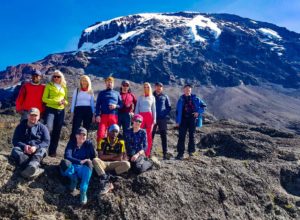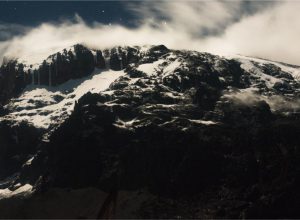
2835m a.s.l
Machame Camp
Machame Camp
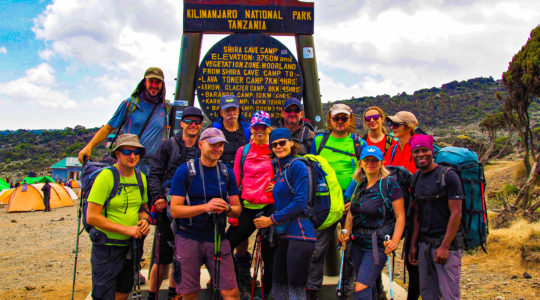
On the first day we will have to drive from Moshi to the Machame Checkpoint at 1800 meters above sea level, where the Machame Gate of the National Park is located. After repacking and gathering the porters, we must head off from the southwestern side of the mountain, initially on a wide path that becomes narrower but still gentle, leading through the tropical equatorial forest to Machame Camp at 2835 m. We will march and trek about 11 km on this day, which should take us no more than 7 hours altogether.
3750m a.s.l
Shira Camp
Shira Camp

On the following day, the distance will be half as long as in the first day - only 5 km. However, this doesn't mean the trekking time is halved—the climb is slightly more challenging, mainly due to the altitude, which can affect physical endurance and make us less efficient. We are going to climb uphill and reach 3750 m between the Kibo and Shira craters where our camp and the destination of the day, Shira Camp, is located.
3900m a.s.l
Barranco Camp
Barranco Camp
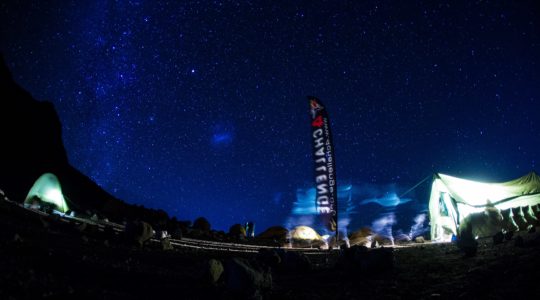
This day is a very important one for acclimatization. To reach the next campsite on our way, we will have to cross the Lava Tower at 4600 m. This stage will very likely feel strenuous due to thinner air. Returning to a camp below 4000 m will improve our well-being and make the eventual return to the same elevation much easier to handle. The route to Barranco Camp, one of the most picturesque sites, takes about 7 hours. The camp is located nearly at the foot of the Kibo crater, which will rise 2000 meters above us.
4673m a.s.l
Barafu Camp
Barafu Camp

First challenge of the day is the nearly 300-meter Barranco Wall with its naturally carved, narrow pathways. This is the only section where it might be advisable to put away trekking poles and use your hands to climb through relatively easy terrain. After 3-4 hours of alternating climbing and descending, we will cross Karanga Camp at 3995 m, which serves as an acclimatization point for the 7-day long version of the expedition. From here, it's another 3-hour climb to Barafu Camp at 4673 m. Nighttime temperatures here can drop to -10°C, which is to be considered when preparing.
5895m a.s.l
Uhuru Peak
Uhuru Peak

This is the big day. We will have to leave the tents at midnight, have a small something to eat and prepare for the summit attempt, happening by 1 a.m. Six hours of steep climbing will take us to the crater rim at Stella Point at 5756 m, from where it's another hour of a less challenging trek, leading along a wide ridge straightly to the summit—Uhuru Peak at 5895 m. After reaching the world's highest free-standing mountain, it's a 3-hour descent to Barafu Camp, where we will take a short break and have breakfast. Then, we must descend further with the porters and guides to Mweka Camp at 3100 m in the Mweka Valley.
3100m a.s.l
Mweka Camp
Mweka Camp
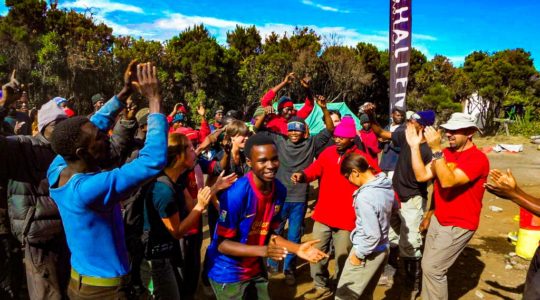
A Farewell to our porters, cooks, and the entire support team. Shared dances and songs along with, hopefully, well-deserved tips for the crew. After breakfast, we will take a 4-hour walk through the dense tropical forest to the Mweka Gate, where vehicles will be waiting to take us back to the hotel in Moshi. Before we leave, we'll have lunch just outside the park gate and a chance to buy some souvenirs.

3100m a.s.l
Mweka Camp
Mweka Camp








